Especially Military Aviation
2004 was an interesting year from the standpoint of those
interested in present, or historical, military aviation. We had an
ongoing war, some aircraft to Hail and Farewell, and an anniversary
of considerable interest.
The anniversary? The most durable aircraft in the US inventory
celebrated its golden jubilee. The C-130 HERCULES first took to the
air in August, 1954, and to the astonishment of all, Lockheed
Martin is still building them. Not many other military planes are
still serving in their design role 50 years after first flight --
India's MiG-21s, a variety of DC-3s, the venerable B-52. But none
of those are still coming off the line. So you could do worse than
think of 2004 as The Year of the Herc.
Aviation In The War
In the war, fixed and rotary wing combat aviation were vital, if
often unsung, contributors to the Global War On Terrorism (GWOT in
Pentagon acronyms) in Afghanistan, Iraq and elsewhere.
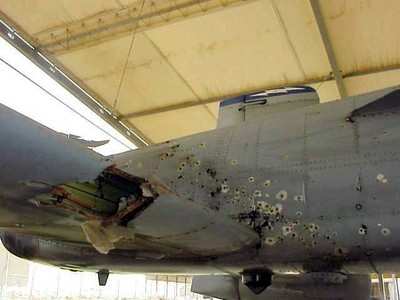
With the end of major combat operations in Iraq, the war there
became what the war in Afghanistan had been -- a counter guerilla
campaign with fast-movers under ground control, and attack
helicopters, duking it out with scattered insurgent bands. The
insurgents for their part tried to avoid the attentions of
JDAM-toting jets and heavily-armed helicopters, and take shots at
unarmed transport aircraft with a dwindling stock of Soviet-made
man-portable missiles.
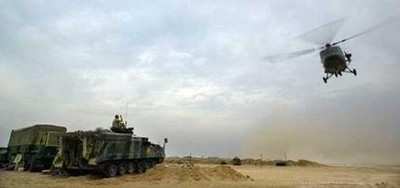
The dangers of aircraft operations in the war didn't stop with
the guys shooting at you -- several military aircraft and a
contractor-operated CASA 212 were lost in accidents this year. The
Afghan and Iraqi theaters of operation offer harsh conditions and
difficult flying.
New Fieldings, US and Abroad
The SAAB Gripen continued to succeed with both NATO and neutral
nations. In these deals, it's only partly about the planes: it's
mostly about the Benjamins, and Lockheed Martin sales people grouse
about unfair business practices, or a deck stacked against their
F-16. The Eurofighter Typhoon doesn't seem to have much appeal
beyond those nations that have been committed to the advanced
warplane from the very beginning, France, England and Germany.
Going into 2005, the weakness of the US dollar is a cloud with a
silver lining for Lockheed Martin, as it makes the American plane
far more competitive.
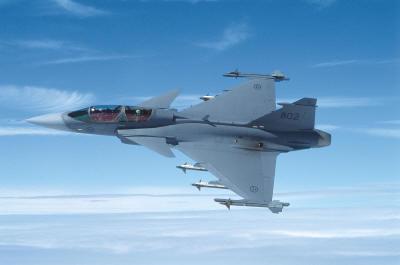
The poor nations of the world continue to turn to Russia and
China for aircraft. These machines are also designed from the
beginning for simple field maintenance. Maintenance is always a
problem with poor nations, especially those who rely heavily on
conscripted soldiers to maintain their machinery.
The F-35 program sounds quiet, but it proceeds apace. Big news
in 2004 was the USAF indicating that it wanted to buy a significant
number of the STOVL variant. The USAF is desperate to get rid of
its A-10s, but the USAF's customer for close air support -- the
Army -- doesn't want to see this capability vanish. The entire F-35
multinational, multiservice program has a long and arduous
budgetary road ahead. While it will certainly be a newsmaker in the
coming year and years ahead, it may not field for ten years -- if
at all.
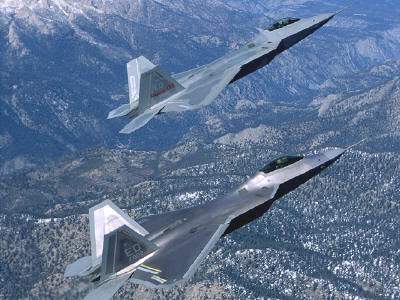
The F-22 is somewhat more imperiled by a restive Congress
looking to fund operations: its unit cost of $133.3 million makes
it the juiciest of targets. The world-beating stealth/supercruise
fighter is in low-rate production and undergoing test and
evaluation at Edwards AFB, and may reach Initial Operational
Capability by the end of 2005 (the first unit will be at Langley
AFB in Virginia). There also has been a first F-22 Class A (in
fact, Hull Loss) accident, on December 22, about which the USAF is
not saying much. The pilot ejected and was unhurt. In the last days
of December, the USAF cut its request for F-22s, probably trying to
get in front of the parade to minimize the effect of cuts. Of
course, the already unimaginably high cost of the F-22 is largely
the result of collapsed economies of scale, as the buy keeps
getting cut back, and fewer and fewer tail numbers bear the burden
of the huge R&D costs.
 Some of the most interesting
developments have a crew of zero. But you probably wouldn't want to
pilot a mid-course interceptor. That's because it's a missile
designed to protect the nation, or an ally, or a naval force at
sea, from incoming ballistic missiles; it destroys the missiles by
colliding with them. This is a response to the threat posed by the
disturbing proliferation of missile technology, and nuclear and
other highly threatening warheads. The Army has one system located
in Alaska and California that is nearing an initial limited
capability; the missiles are based on Patriot technology, but are
fired from fixed silos. The Navy has another system based on an
improved Standard missile. Tests so far are mixed. A boost-phase
capability will not rely on missiles, but on a manned aircraft that
fires a huge laser; that is in testing now.
Some of the most interesting
developments have a crew of zero. But you probably wouldn't want to
pilot a mid-course interceptor. That's because it's a missile
designed to protect the nation, or an ally, or a naval force at
sea, from incoming ballistic missiles; it destroys the missiles by
colliding with them. This is a response to the threat posed by the
disturbing proliferation of missile technology, and nuclear and
other highly threatening warheads. The Army has one system located
in Alaska and California that is nearing an initial limited
capability; the missiles are based on Patriot technology, but are
fired from fixed silos. The Navy has another system based on an
improved Standard missile. Tests so far are mixed. A boost-phase
capability will not rely on missiles, but on a manned aircraft that
fires a huge laser; that is in testing now.
Also in the zero-crew mode are the proliferating unmanned aerial
vehicles (called "uninhabited" by the terminally PC). Most of these
are used for what the military now calls RSTA: Reconnaissance,
Surveillance, and Target Acquisition. A combat capability has been
slow in coming, first for the RQ-1A Predator drone. Predictions for
the Boeing Joint Unmanned Combat Air System have many armchair
analysts saying that the F-35 will be America's last combat
aircraft. Two X-45A technology demonstrators have taken some baby
steps in this direction, and a larger X-4C is under construction.
Of course, a British White Paper has already said that the day of
the manned aircraft is done, and future wars will be fought by
robotic aircraft and missiles. That White Paper might have been a
bit premature: Defence Minister Duncan Sandys issued it in
1957.
Retirements
It was the end of the line for a lot of military aircraft
worldwide, including one of the longest serving: Meteor WK600 was
the last single-seater Gloster Meteor in service, operated as a
drone or manned radar-target in the UK by a contractor on behalf of
MOD. But under a previous serial number t had served in the Korean
war. For whatever reason (bad aim?) it never joined its
contemporaries at the bottom of the North Sea after drone
conversion. The type had a sixty-year history with the RAF, and
this example had 50-plus of them.
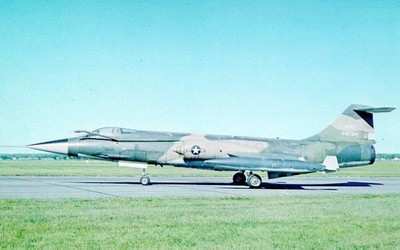
Another military icon that took retirement in 2004 was the
Lockheed F-104. An airplane that served for decades worldwide, yet
only managed relatively brief and inconclusive involvements in
small wars. Instead, it kept the peace throughout the cold war -- I
well recall huddling on Alpine mountaintops and watching F-104Gs
snake through the valleys below. The airplane managed fifty years
of service to the day, from first flight in 1954 to last flight of
Italy's F-104S models on October 31, 2004.
With those old veterans going into honorably-deserved retirement
to museums, it's somewhat expected. They did their duty, and then
some. But it's a shock to think that the F-14, the last of a long
line of naval fighters to bear the Grumman name, embarked on its
last combat cruise in 2004 (It's not officially retired yet. It's
still out there).
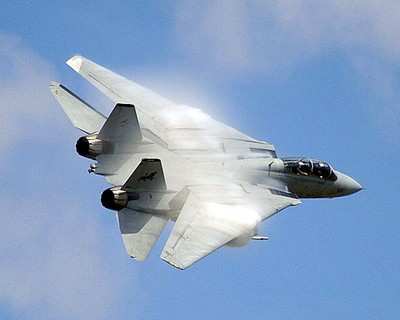
F-14s will probably fly in some capacity or the other into 2006,
but the machine's days as a frontline fighter are winding down. It
doesn't seem that old, and it isn't, quite: its design dates from
the collapse of the ill-considered F-111B project in the 1960s, and
it was fielded in 1973. Perhaps some will linger on for special
purposes (like that last single-seat Meteor did in Britain). You
will never get one to admit it, but many Naval Aviators serving
today first caught the bug from Top Gun, the hokey Tom Cruise
movie, where the feisty Tomcat stole the screen from Cruise (who is
a licensed pilot himself; I wonder if *he* caught the bug
then...?)
The F-14 started as a missile carrying interceptor designed to
keep enemy swarms away from a carrier battle group, and ended as
sophisticated all-weather smart-bombing, LANTIRN-equipped F-14D
Bombcats in the desert skies of Afghanistan and Iraq, often
hundreds of miles from the open ocean. Old age and more complex
maintenance than the F/A-18 C/D added up to a pink slip for the
swing-wing fighter, but any crewdog who flew it will tell you, it's
retiring undefeated.
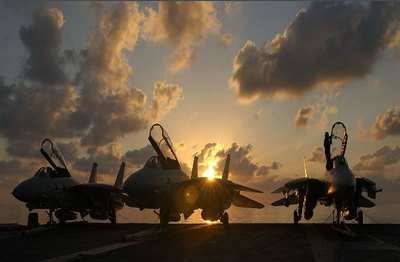
Fittingly, one of the ships from which the F-14s took to the
skies during the long years of the cold war, USS Midway, was
retired to a new home as a museum in San Diego. With an F-14 on her
deck for all time.
Rotary Wing Developments
In the US, the big news wasn't the Osprey, to the relief of all
involved in the V-22 fielding. An appearance on the front pages for
that program usually means a disaster has happened, but no disaster
did this year, and the type moved closer to fielding by the USMC
and USAF special operations. One of the most significant milestones
the shipboard suitability qualification of the Marines' first
Osprey unit. Other important tests wrung out the Osprey's
aerial-refueling capability, and its suitability for desert
environments. About two dozen of the machines have been built so
far, which will reach initial operating capability with the Marines
in the coming year, and with USAF Special Operations as early as
2006. In coming years, more and more of us will see the eerie sight
of the machine passing us in the sky, its massive blades turning
slowly, majestically.
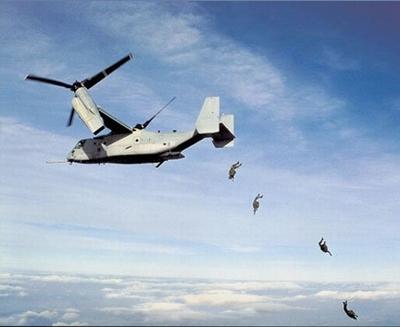
Worldwide, the Sikorsky S-92 fought against the Agusta-Westland
EH101 over the medium transport market niche currently filled by
aging Sea Kings, H-53s, and Pumas. It's too early to declare an
overall winner, and the market may be large enough to allow both
machines to survive. In most nations the battle is less about the
relative merits of the two aircraft, and more about internal
politics. Canada, for example, has chosen both machines at
different times, but hasn't actually taken delivery of any, and
Canadian rotor jocks aren't holding their breath.
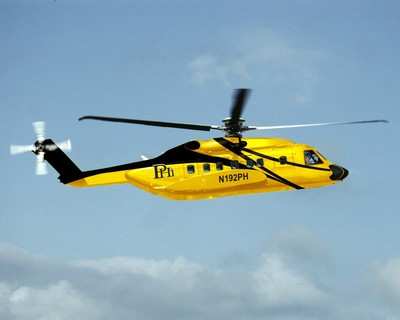
The casualty of 2004 was the Army's Comanche
reconnaissance/attack helicopter (below). The Army never
articulated clearly its need for this machine, designed to fight
against a sophisticated Western enemy at a time when most of the
nations that would meet that description are allied with the USA to
one extent or another in the battle against terrorism. And the high
cost of the highly capable Comanche was a budgetary plum too ripe
to escape plucking. The money will be used instead to replace
obsolete machines like Hueys, that had been expected to soldier on
for decades in the National Guard. The Army is also talking about a
fixed-wing transport for light intra-theater airlift. The Army once
owned a fleet of DHC-4 Caribous (C-7A and C-7B in US nomenclature)
but gave them up to the Air Force, which over the years has
neglected the mission the 'Bous once handled.
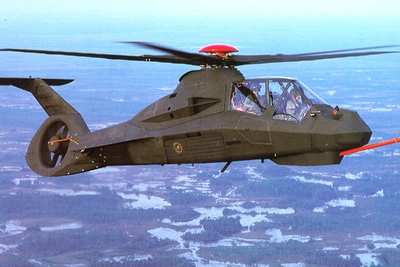
Historical Military Aviation
Historical military aviation moved forward substantially in
2004, with some long-silent types taking to the air again (FW190,
Me262, Curtiss P-36, Lavochkin) or at least getting close (Nakajima
Ki-43 Hayabusa --"Oscar" -- was in taxi testing). The FW190 project
of German-based Flug Werk is in production with 12 airframes, 10 of
which have been sold already. The first production machine has been
making test flights from Manching Air Base. The aircraft are as
close as possible to WWII machines, with some substitutions
required, but some original parts reused. They have serial numbers
that follow on from wartime production.
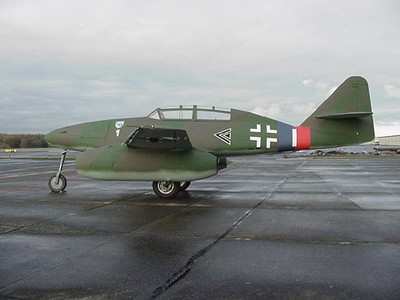
Some machines which had been grounded moved closer to flight.
Lefty Gardner's P-38, White Lightnin' - N25Y, which was a fixture
at airshows before its June 25, 2001 inflight fire led to a forced
landing with substantial damage, has been bought by European-based
Red Bull Flyers and will now be fully restored to flying condition
by Nelson Ezell. The above-mentioned Me262 was itself
recovering from a serious groundloop.
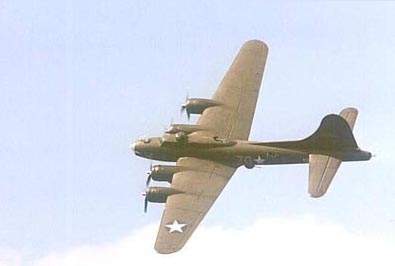
Important types that saw their numbers grow in 2004 included
B-17, where Tom Reilly finished a long restoration, Corsair,
Spitfire, and Mustang, all of which had multiple examples take to
the air.
Russia continues to yield a bounty of Axis and Allied types in
solid, restorable condition from the stillness of her cold
lakes.
And, as is always the case at year's end, some machines -- and
lives --have been lost. One heartbreaker was the loss of Don Hinz
in the Redtail P-51C due to -- of all things -- a bad key on a
magneto drive gear, in Red Wing, MN on Memorial Day weekend. Hinz's
family, the CAF, and the Tuskeegee Airmen have vowed to rebuild the
machine. A CAF C-60 (Lockheed Lodestar) appears to have fallen
victim to flying-speed and directional-control problems resulting
from a downwind takeoff -- the crew fortunately escaped the
postcrash fire. And the annual NTSB reports have the usual crop of
T-6 and T-28 mishaps: three each.
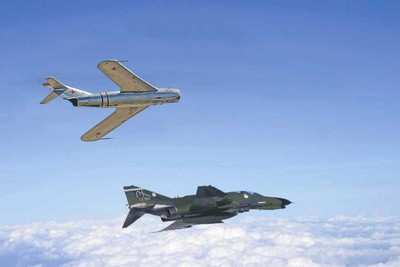
The situation with historic jets has been less positive. The FAA
bungled a replacement of Letters of Authorization with type ratings
on the Airman Certificate. Ironically, for those of us that think
the FAA is a gigantic, faceless bureaucracy, the problem was that
it was one man's project, and he was laid low by a serious illness.
The system is working better now, or maybe the pilots are getting
used to it -- the grousing has gone down, anyway.
Considering the hours flown, historic jets remain a risky subset
of flying. George Cambron (below) died in his MiG-17 in
New Mexico on March 25, enroute to an air show. A runway overrun
accident in May seriously damaged a Lockheed TV-2 Navy trainer, but
no one was injured in that mishap.
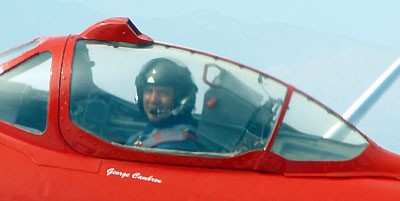
A Sense Of The Year As A Whole
On the whole, 2004 was quite a positive year for military
aviation worldwide. There have been no great air-to-air battles, no
bombing of cities, no use of planes by terrorists (although there
are some disturbing tales of laser interference, as we go to
press). Despite the pressures of a war in which the US and many
allied nations have been involved, flight safety continues
incremental improvement, driven in part by the better technology
and technical reliability of new equipment. New machines continue
to replace old, and old machines continue to impress their fans at
air shows and in museums.
 Aero-News: Quote of the Day (04.28.25)
Aero-News: Quote of the Day (04.28.25) ANN's Daily Aero-Term (04.28.25): Decision Altitude (DA)
ANN's Daily Aero-Term (04.28.25): Decision Altitude (DA) ANN's Daily Aero-Linx (04.28.25)
ANN's Daily Aero-Linx (04.28.25) Airborne-Flight Training 04.24.25: GA Refocused, Seminole/Epic, WestJet v TFWP
Airborne-Flight Training 04.24.25: GA Refocused, Seminole/Epic, WestJet v TFWP Aero-News: Quote of the Day (04.29.25)
Aero-News: Quote of the Day (04.29.25)

















